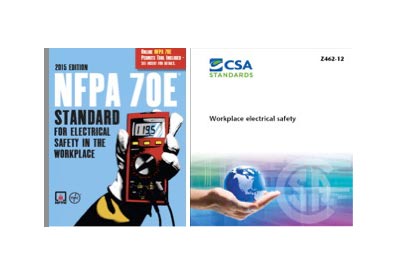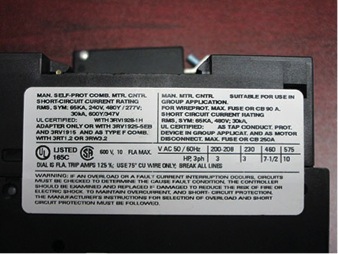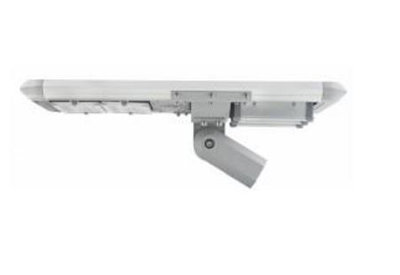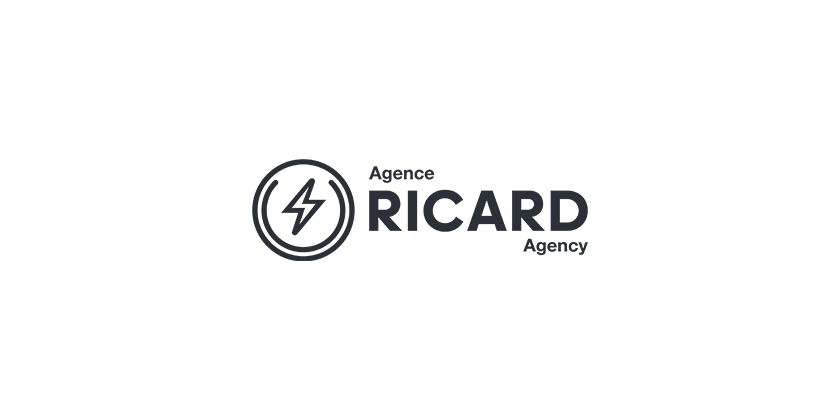Setting up an Electrical Safety Training Program: What is Required by OSHA, CSA and NFPA?

James R. White
In Part 1, James R. White looked at the level of training required, suggested components of a training program, and the definition of a “qualified” person. Here, he compares CSA Z462 and NFPA 70E by emergency response training, lockout/tagout and more. Also included: a handy checklist summary of CSA, NFPA and OSHA electrical safety training requirements.
NFPA 70E and Canada’s Z462 Clause 4.1.6.4 have almost identical requirements to OSHA, but also add the following:
NFPA 70E section 110.2 (D) “Decision-making process necessary to be able to do the following:
1. Perform the job safety planning
2. Identify electrical hazards
3. Assess the associated risk
4. Select the appropriate risk control methods from the hierarchy of controls identified in 110.1(G), including personal protective equipment.”
Be aware that Z462 is behind NFPA 70E by a cycle, so those requirements are, at the time of the writing of this article, not exactly the same.Typically, Z462 adopts what NFPA 70E has added in the latest edition, but sometimes not.The reader must ensure they understand the requirements of the province they reside or work in, as each Canadian province has different requirements.Z462 is the first national safety standard adapted by CSA.This article will use the wording in the 2015 edition of NFPA 70E as its basis.
Where OSHA is “non-prescriptive”, that is, they won’t usually require anything specific, NFPA 70E and Z462 are prescriptive.NFPA 70E section 110.2 (A) and Z462 Clause 4.1.6.1 state “(A) Safety Training. The training requirements contained in this section shall apply to employees exposed to an electrical hazard when the risk associated with that hazard is not reduced to a safe level by the applicable electrical installation requirements. Such employees shall be trained to understand the specific hazards associated with electrical energy. They shall be trained in safety-related work practices and procedural requirements, as necessary, to provide protection from the electrical hazards associated with their respective job or task assignments. Employees shall be trained to identify and understand the relationship between electrical hazards and possible injury.”
Note that even NFPA 70E and Z462 get somewhat vague.No one can foresee all circumstances and conditions the worker may have to perform their task in, so it is impossible to provide a step-by-step training requirement.The employer must assess the hazards at their company’s worksite and determine what training is required to protect workers.
The above section requires the training of anyone who may be exposed to electrical hazards.The training has to include electrical hazard awareness, procedures and requirements needed to avoid the hazards, understand the relationship between electrical hazards and the injuries that may be caused by those hazards.The employer must ensure the training is site-specific and covers the actual hazards the workers may encounter.
Emergency response training
NFPA 70E and Z462 require emergency response training.Using the wording in NFPA 70E:
“(1) Contact Release. Employees exposed to shock hazards shall be trained in methods of safe release of victims from contact with exposed energized electrical conductors or circuit parts. Refresher training shall occur annually.
(2) First Aid, Emergency Response, and Resuscitation.
(a) Employees responsible for responding to medical emergencies shall be trained in first aid and emergency procedures.
(b) Employees responsible for responding to medical emergencies shall be trained in cardiopulmonary resuscitation (CPR). Refresher training shall occur annually.
(c) Employees responsible for responding to medical emergencies shall be trained in the use of an automated external defibrillator (AED) if an employer’s emergency response plan includes the use of this device. Refresher training shall occur annually”.
The above section requires annual training in emergency release of shock victims, first aid and CPR and the use of AEDs, if AEDs are available at the job site.The American Heart Association requires CPR training only every two years, but NFPA 70E requires it annually.The reason for the discrepancy is that AHA recommendations apply to the general public and workers of all types.NFPA 70E applies specifically to electrical workers, who have a much higher risk of shock.
Additional training requirements in NFPA 70E/Z462
These requirements include:
• People undergoing training who can then demonstrate the ability to perform specific tasks safely can be considered qualified for that task.That person may still be unqualified in regards to other tasks, though.
• Tasks performed less often than once per year require retraining on that task before they can perform that task again.Training can be on-the-job (OJT), but be careful to document such OJT, as OSHA inspects training records in the event of an accident.
• Qualified people must be trained to select the appropriate test instrument.That qualified person must also demonstrate how to safely use the test instrument to determine the absence of voltage, interpret the indications of the test instrument, be able to inspect the test instrument to ensure it is safe to use and understand the limitations of the test instrument being used.
• Employers must conduct regular checks to ensure their employees are following the safety-related work practices required by the standards, as well as their company.
• Unqualified people must also have training.They must be trained on how to recognize and avoid electrical hazards they may encounter.If they interact with equipment, such as operating electrical equipment, especially circuit breakers, fused switches and MCCs, they must be trained to understand how the equipment functions and operates, and the hazards that may be present when operating the equipment.If PPE is required, unqualified workers must receive training on the selection, inspection, use, care and limitations of that equipment.
• Retraining (not refresher training) must be conducted at least every three years.Retraining must include changes made to NFPA 70E/Z462, company work practices, procedures and policies changes being made as a result of such changes, and:
o The annual inspections reveal worker(s) are not following safety-related work practices required by the company or 70E/Z462, or
o The company installs new technology that is different than what the worker is used to, or
o The worker must use work practices that are different than those normally used by the worker
Lockout/tagout
In addition, NFPA 70E and Z462 have requirements for lockout/tagout (LOTO) training in Article 120/Clause 4.2.2.2.2.LOTO training requirements include:
• All persons exposed or affected by a LOTO must be trained to understand the LOTO procedure and their responsibilities in its execution.
• If the worker is new or recently assigned, they require training to understand the LOTO procedure and their responsibilities.
• Retraining is required whenever the procedure(s) are revised or at least every three years.
• LOTO training must be documented.
When you need a training specialist
Most employers face the need to bring in a safety training specialist for part or all of the training requirement. The challenge can be differentiating between training options, since not all private training programs meet the requirements discussed above.Helpful guidelines:
• By these standards, initial electrical safety training cannot be done in a day.
• Initial electrical safety training must have hands-on labs with a documented demonstration of skills.
• Look at the instructor’s qualifications and check references.Being an engineer or ex-utility worker does not on its own qualify someone to present electrical safety training.
• Membership on NFPA 70E committee, Z462 committee, NEC Code-Making Panels, etc. indicates a better understanding of those documents.
• Don’t go low-bid.There’s usually a reason training is inexpensive.
• Don’t be a “box checker”, or someone who just wants to “get it over with”.People’s lives may depend on the safety training they receive.
Summary
NFPA is advocating an integrated approach to hazard risk analysis, PPE selection and safe work practices, with training as the cornerstone. It can be tempting to think of regulation-driven training as an overhead expenditure, but done right, good training improves the safety and efficiency of your technical workforce and often reduces long-term expenses.
Overview of OSHA, NFPA and CSA electrical safety training requirements
• Training is required for qualified and unqualified persons
• A qualified person is anyone exposed to or potentially exposed to electrical hazards
• Training is required to establish an understanding of their and their employer’s responsibilities for electrical safety
• Training must be such that attendees are able to recognize and avoid electrical hazards
• Initial training must have a method to immediately respond to questions from the attendees and have a hands-on portion to establish proficiency
• Trainees may not have a formal education in areas relating to electrical safety
• Training is to be effective, site-specific and cover the hazards at that location
• Computer-based and video training can be used to augment instructor-led training, but cannot replace it
• Qualified persons must have training in and demonstrate skills and knowledge of electrical equipment and power systems.Such training must cover:
o Basic construction of the equipment and power system
o The manufacturer’s recommended operating procedures, including the use of any specialized tools or attachments
o The hazards associated with operating the equipment or power system
• Qualified person training must receive training in:
o Skills and techniques to test for the presence and absence of voltage
o Skills and techniques to determine nominal (phase-to-phase) voltage of the electrical power system
o Safe approach distances for electrical shock and arc flash
o Perform safety job planning
o Assess the risk associated with a specific job task
o Select the appropriate methods from a hierarchy of controls, including PPE
o Safety-related work practices and procedures to perform the job task safely
o How to identify and understand the relationship between electrical hazards and injury
o How to select the correct test instrument, how to inspect it, how to safely use it, what it’s limitations of use are, and interpret the indications
• Annual training is required for contact release, first aid and CPR
• Annual training is also required for the use of AEDs, if there are AEDs on site
• Workers can be qualified to perform specific tasks, if they receive training in and demonstrate proficiency at that task while being supervised by a qualified person
• Tasks performed less often than once per year require retraining before that task can be performed again.
• Supervisors are required to perform inspections and audits, at least annually, to determine if their employees are following company procedures and NFPA 70E/Z462
• Even unqualified persons must have training in:
o How to recognize and avoid electrical hazards they may encounter
o How to operate electrical equipment
o What the hazards are associated with the use of such equipment
o What PPE may be required and when to use it
o How to inspect, maintain and store electrical PPE
o What the limitations are of electrical PPE
o What the hazards are associated with the use of such equipment
o What PPE may be required and when to use it
o How to inspect, maintain and store electrical PPE
o What the limitations are of electrical PPE
James R. White IS Training Director, Shermco Industries, Inc. for Fluke Corporation.This article has been lightly edited.

















